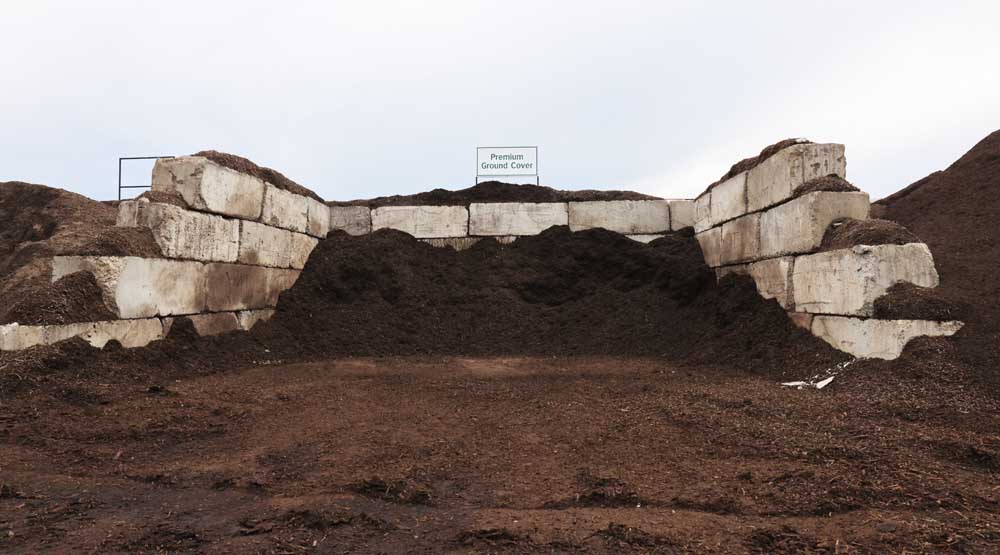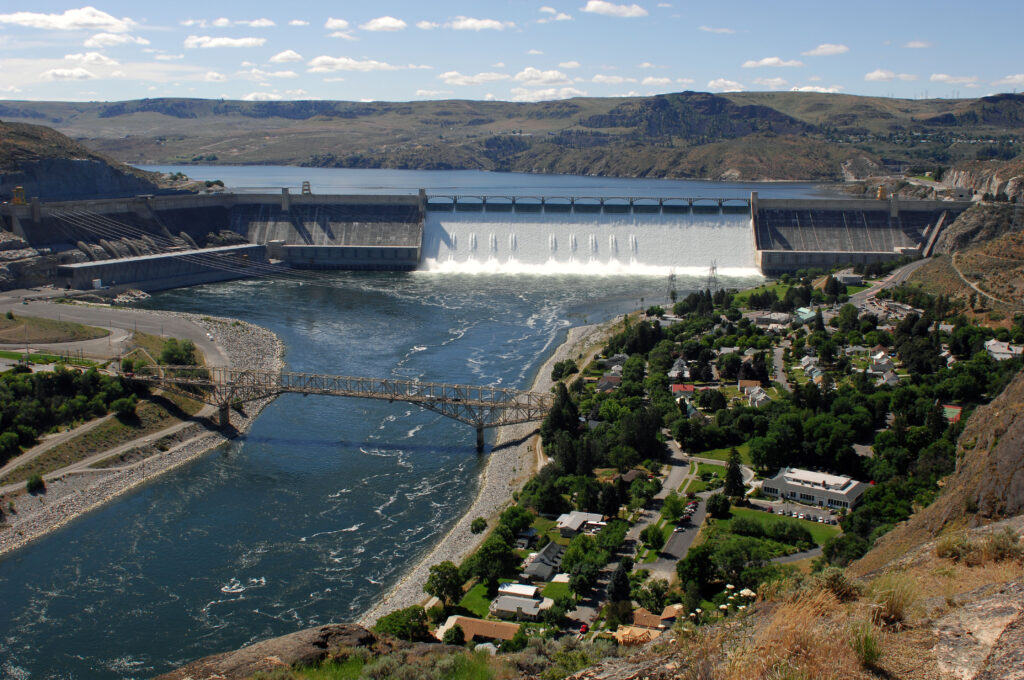Knott Landfill transforms dinner leftovers, grass clippings into compost
Published 5:45 am Wednesday, June 14, 2023

- The final compost product is divided into four grades, Soilbuilder — five-eights of an inch for soil amendment; BioFine — three-eights of an inch particle size for top dressing; ReadyGrow — a blend of native soil and Soilbuilder compost, ideal for planting flower beds or gardens and sold to consumers at Knott Landfill in Bend.
As the weather warms up, Bend’s backyards are bursting at the seams with greenery.
That also means yard debris barrels are getting filled with all manner of grass clippings and trimmed hedges. Come fall they will be stuffed with leaves. Food scraps are finding their way into those barrels, too, as many strive to turn their dinner leftovers into compost.
Some of that messy yard debris may actually come back to your yard to help your garden grow. Here’s how it works:
From curbside to landfill
Republic Services and Cascade Disposal, Central Oregon’s two main trash haulers, unload their yard debris at a composting area next to Knott Landfill on Bend’s southeast side. Landscapers and homeowners also visit frequently with trailers and pickups overflowing with yard trimmings.
The pile of branches, grass, pine cones, needles, leaves and discarded food then begins a multistep journey toward a compostable product that finds its way into many of our parks and gardens.
The first step in the process sees workers inspecting the pile of debris and removing contaminants. Plastic bags, metal, trash and even cinder blocks are located and fished out of the pile, said Rusty Davis, operations manager with Republic Services, which operates the facility.
“It just creates more work on our side to collect that material before we send it through. Education is our number one tool to prevent contamination,” said Davis.
Help from the Environmental Center
The Environmental Center in Bend helps with composting public education campaigns.
Its program manager, Udara Abeysekera Bickett, said one of the biggest sources of confusion is food utensils labeled “compostable, biodegradable, biobased.”
“The bottom line is these products are not compatible with the composting systems available to us locally,” said Abeysekera Bickett.
“They take much longer to break down than the truly organic materials like food waste and yard debris, so you can end up finding what looks like a plastic fork in your compost. Keep food-service ware and other packaging products labeled ‘compostable, biodegradable, biobased’ out of the yard debris bin.”
More coverage: From curb to recycle center, what happens to the items in your recycle bin?
Branches and logs are OK to include in yard debris as long as they’re under 14 inches in diameter, said Davis.
As for lumber and plywood, Republic Services accepts these at the Recycling Center. They are ground into wood chips and sent to a plant in Klamath Falls where it’s turned into oriented strand board, an engineered wood product similar to particle board.
Let the composting begin
Once the contaminants are removed, earth movers transfer the debris into a grinder. The mashed-up material is then pushed into heaps where it sits for around two weeks. Air is pumped through pipes underneath the pile to aerate the debris.
“We force air into these piles to control the temperature. It needs to be between 130 to 160 degrees Fahrenheit to bring the microbes to life to break down the material,” said Davis. “It aids in the composting.”
The pile only needs to be in that temperature range for three days to cook out any pathogens and kill off any seeds, but Republic Services keeps the pile in place for two weeks.
The piles are then moved into rows (known as windrows) where they remain for another two to six weeks as an added step. The rows are turned weekly to oxygenate them.
“This allows for extra time for the composting process to continue to break down the organic material,” said Davis.
What is the impact of food waste in the composting process?
Juniper branches, pine needles, cones and other carbon-heavy materials make up a significant portion of Central Oregon’s yard debris, so the operators at the Knott Landfill composting facility need as much nitrogen-rich material as they can get.
Grass clippings and food waste help to improve the organic content of the compost and improve its quality.
Davis said food waste makes up around 5% of the total composted material and can come in almost any form, but raw fruits and vegetables add the most organic nitrites.
Other food leftovers, including meat, bones and leftovers from meals are also permitted to enter the composting stream. Potential bacteria that can come with meats are cooked out of the compost heaps, said Davis.
Why is composting better than the landfill?
The U.S. Department of Agriculture says 30 to 40% of the food grown in or imported to the U.S. for human consumption is actually never eaten. And a 2019 study by Portland State University revealed that Oregon households throw away on average 6.3 pounds of food per week.
“When we send food to the landfill, it produces methane as it breaks down. Methane is a potent greenhouse gas that contributes to climate change,” said Abeysekera Bickett. “Placing wasted food in the yard debris containers instead allows it to be turned into nutrient-rich compost.”
Bacteria-free compost
Monthly testing is done on the compost heaps by third-party agencies to ensure the final product is free of salmonella, E. coli and other bacteria.
Davis said in a backyard setting, people should avoid putting meats, bones, cheese, and eggshells in their compost system because they take too long to break down.
While Bend and Redmond permit all food waste to be collected in the yard debris barrel, the city of Sisters does not allow its residents to compost meat products. Sisters residents can add raw fruit and vegetables to their yard debris barrels.
Restaurants and grocery stores in Deschutes County produce a significant amount of food waste for the composting stream, but schools are also contributing.
Currently, nine schools in Bend-La Pine Schools collect their food waste for delivery to the Knott Landfill Recycling Center.
Scott Maben, a spokesperson for the school district, said each week the nine schools collect 1,088 gallons of food waste.
The end product
Back at the compost heap, another round of sifting removes rocks and other nonorganic material.
The piles are also screened for different sized compost, either a five-eighths inch size or a three-eighths inch size. When it’s done, the material has the look and feel of potting soil.
The entire process takes four to eight weeks, said Davis.
The facility makes 20,000 to 30,000 cubic yards of compost per season, said Davis, enough to fill up around 10 Olympic-size swimming pools.
Republic Services sells the organic compost back to the community.
The nutrient-rich soil amendment can be hauled away by the bag or loaded into a trailer or the back of a pickup. Central Oregon farms are also starting to use the Knott Landfill compost for their crops.
Several types of compost are produced for different uses, ranging from very fine compost used to grow plants, to thicker ground cover used to retain water and block weeds. Tilling compost into Central Oregon’s sandy soil helps grow vegetation locally.
What you can do
The public can purchase a bag of compost periodically at Newport Market or directly from the Knott Landfill Recycling Facility. It’s open daily between 7 a.m. to 4:30 p.m.
If you don’t have yard debris pickup service or you’ve got too much, the county offers occasional free drop-offs.
The Deschutes County website has drop-off dates.
For Central Oregonians wanting to lower their food waste, the Environmental Center (envirocenter.org) offers a four-week Rethink Food Waste Challenge designed to help families find out what and how much food is going to waste in their homes.
Participants receive one email per week with tips and tricks on how to reduce wasted food.
The center also holds a series of workshops that cover food waste reduction strategies.
Upcoming workshops and other resources are available through the center’s newsletter.
Tip: Both Republic Service and Cascade Disposal offer their customers a free food-scraps pail upon request, based on availability.
Carbon and nitrogen fun facts
Good composting requires a balance of carbon and nitrogen. Too much of one can throw the whole operation off-kilter. According to a study by Cornell University, the ideal proportion of these two elements is 30 parts carbon to one part nitrogen by weight.
When the nitrogen count is too low, composting will slow down. Going the other way, a high nitrogen count accelerates microbial growth and accelerates decomposition but can create odor problems. High-nitrogen compost heaps require frequent turning and blending with high-carbon waste.
Carbon-to-nitrogen ratios vary greatly. Here are some examples:
• Grass clippings 19:1
• Food waste 15:1
• Leaves and foliage 40-80:1
• Wood and Sawdust 300-700:1






